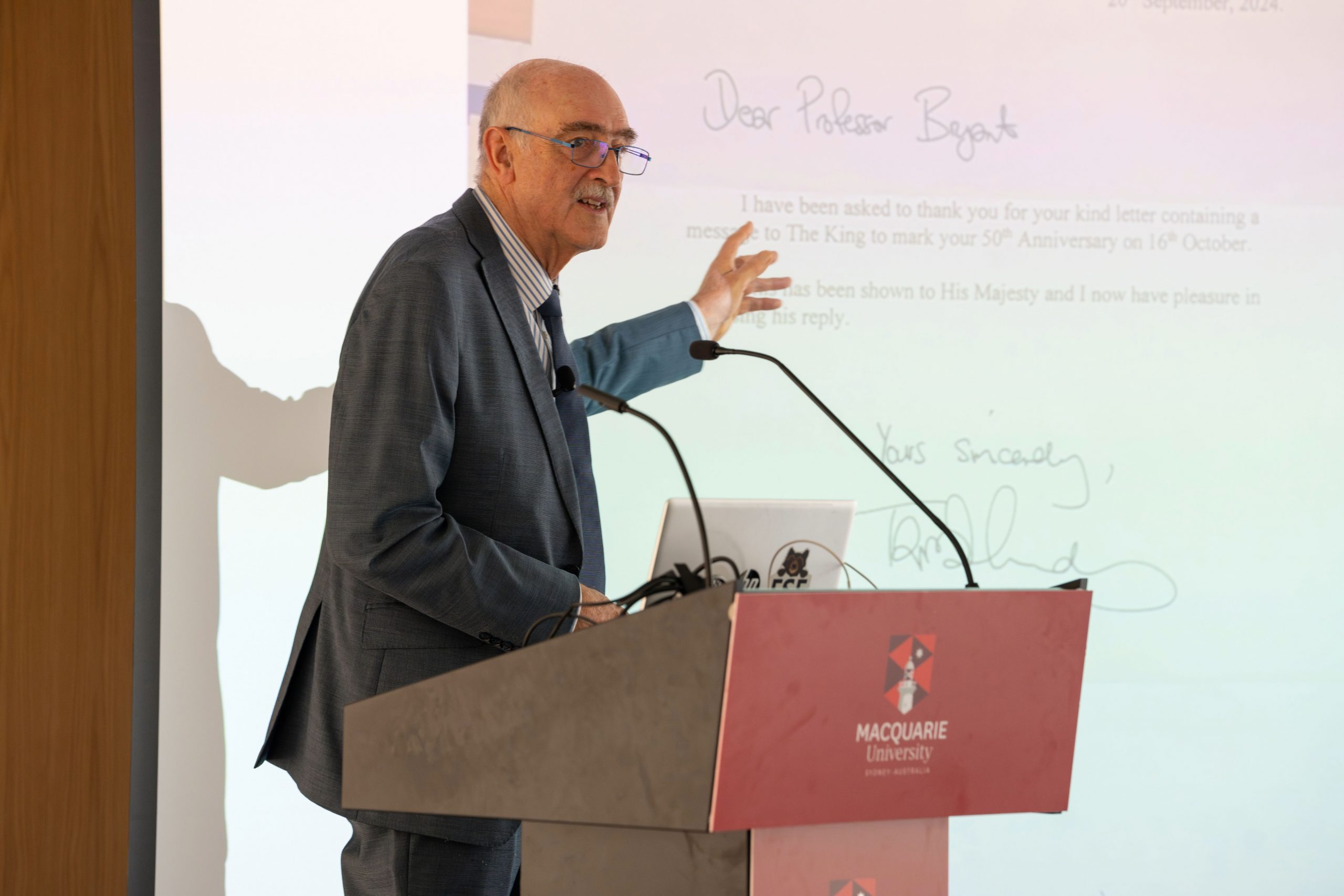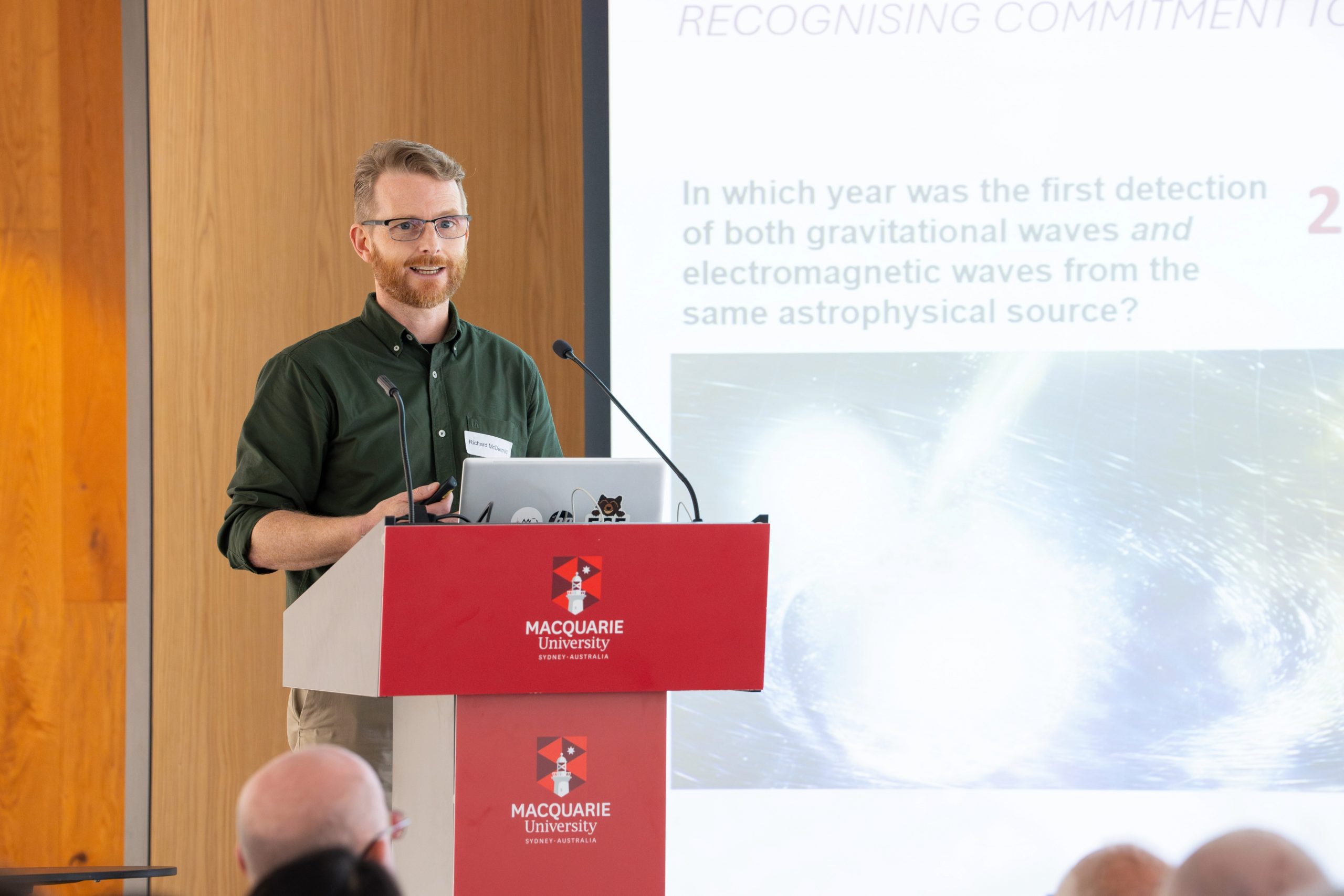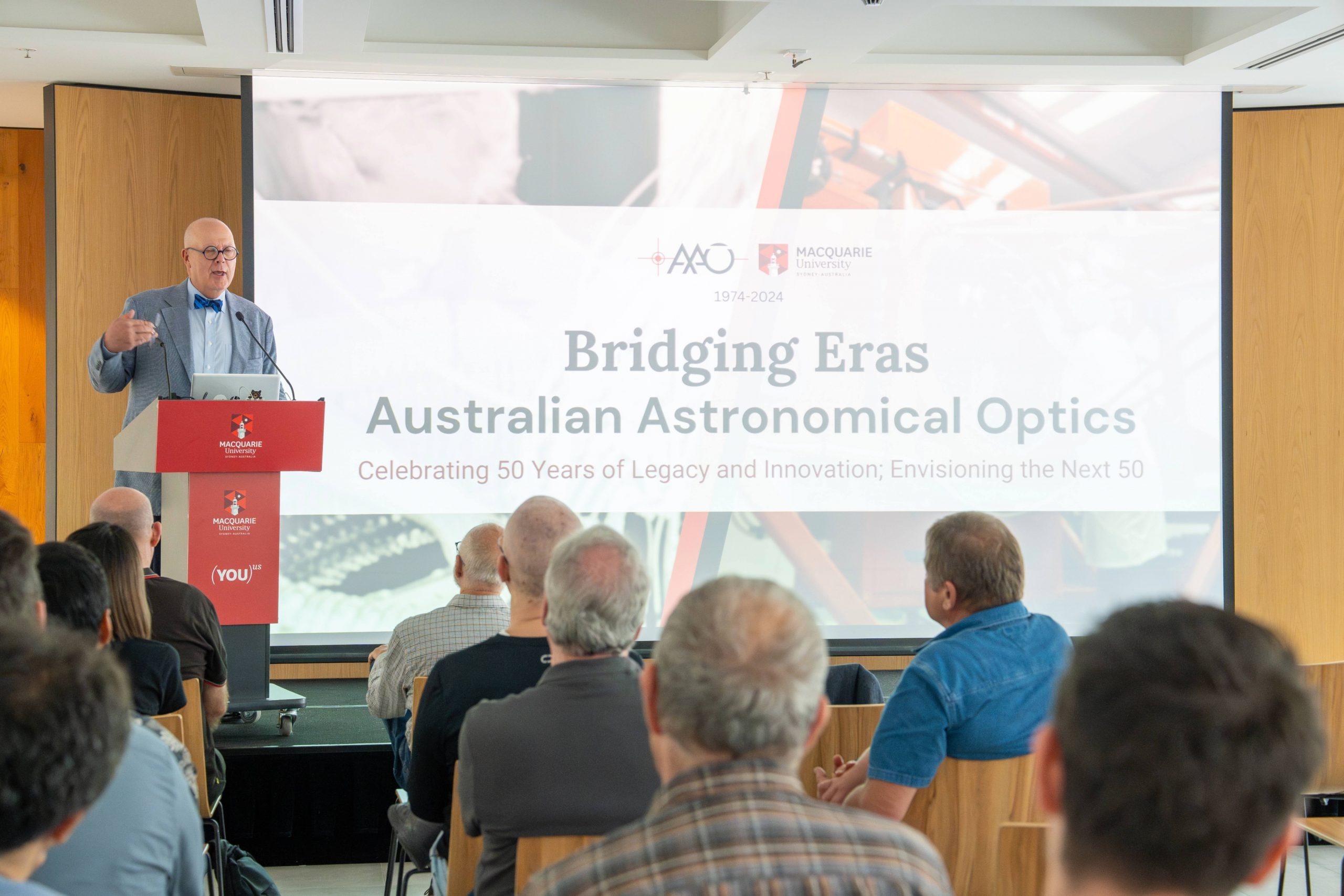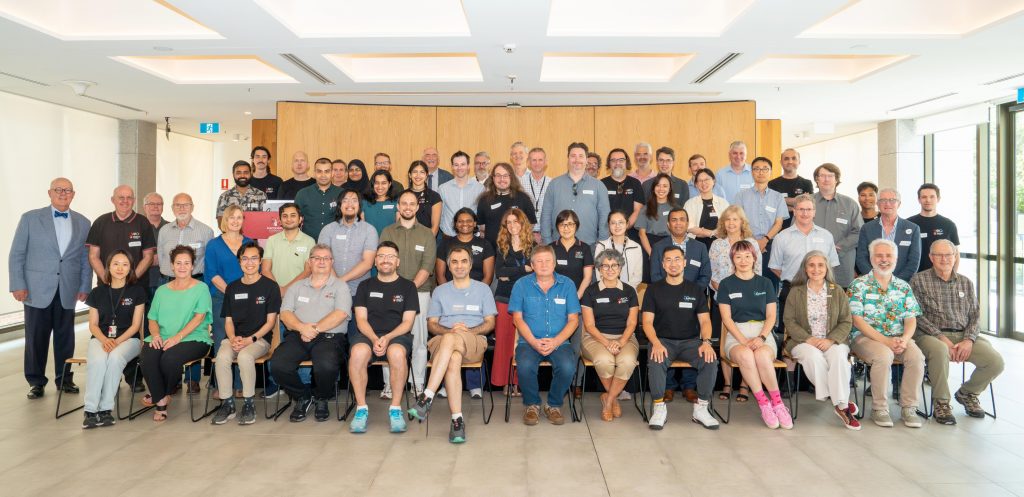The Australian Astronomical Optics (AAO) , a node (Astralis-AAO) of Astralis Instrumentation Consortium, celebrated 50 years of groundbreaking contributions to the world of astronomy on Monday (2 December) at Macquarie University.
The milestone event, themed “Bridging Eras – Celebrating 50 Years of Legacy and Innovation; Envisioning the Next 50”, brought together staff, partners and the University Executive to reflect on AAO’s remarkable journey and exciting future.
From its pioneering days alongside the Anglo-Australian Telescope (AAT) at Siding Spring Observatory to its current global leadership in astronomical instrumentation, AAO has evolved into an organisation with diverse capabilities and worldwide reach. Its cutting-edge instrumentation, innovative research and commitment to inclusion have cemented its reputation as a trailblazer in the field.

A legacy of excellence
Established in 1974 as a bi-national facility, AAO initially focused on supporting the AAT, developing instruments and technologies that reshaped how astronomers explore the universe. Over the decades, AAO’s early adoption of optical fibres and groundbreaking spectrographs like AAOmega and HERMES have not only advanced scientific discovery but also earned international acclaim.
Professor Fred Watson, former Astronomer-in-Charge and event MC, shared his reflections on AAO’s remarkable journey: “While the fibre-optics technique wasn’t actually invented at the AAO, it was transformed there from an interesting novelty into a highly productive technique during the early 1980s. Since then, it has evolved to become one of astronomy’s most prolific sources of fundamental data on the Universe.”

Professor Fred Watson delivering the opening address at the event. Photo: Macquarie University/Chris Barlow.
A new era at Macquarie University
Since transitioning to Macquarie University in 2018, AAO has expanded its impact beyond national boundaries, integrating instrumentation, research and data management capabilities under one roof. This strategic shift has strengthened its global partnerships while aligning AAO’s expertise with Macquarie’s vision for innovation, excellence and inspiring the next generation.
“Our integration with Macquarie has allowed AAO to grow and diversify in ways we couldn’t have imagined decades ago,” said AAO Director, Professor Richard McDermid. “This journey of evolution reflects not only our resilience and adaptability, but also our commitment to fostering an inclusive and collaborative environment for all.”

Professor Richard McDermid, AAO Director, talking at the Staff Appreciation session. Photo: Macquarie University/ Chris Barlow.
A global leader with a bold future
Today, AAO’s influence extends far beyond Australian shores. Its instruments are deployed on some of the world’s most powerful telescopes, enabling transformative discoveries across continents. “AAO represents the application of engineering to some of humanity’s most profound questions,” said Macquarie University Vice-Chancellor, Professor S. Bruce Dowton, who highlighted the international nature of AAO’s work, and how important this global perspective is to the culture and community of Macquarie University.

Macquarie University Vice-Chancellor, Professor S. Bruce Dowton, delivering the closing remarks of the event. Photo: Macquarie University/Chris Barlow.
Honouring the hands and minds behind AAO’s legacy
The event celebrated not only AAO’s technological and scientific milestones but also the hands and minds that have dedicated themselves to its success over the decades. From visionary pioneers to today’s talented team, it is the people of AAO who have transformed challenges into innovations and built a legacy of excellence.
“AAO is more than an organisation — it’s a community of passionate individuals united by a shared purpose,” said Professor McDermid. “It is through their ingenuity, dedication, and collaboration that we’ve achieved so much, and we look forward to welcoming the next generation of innovative thinkers to join us in shaping the future of astronomical technology and discovery.”

